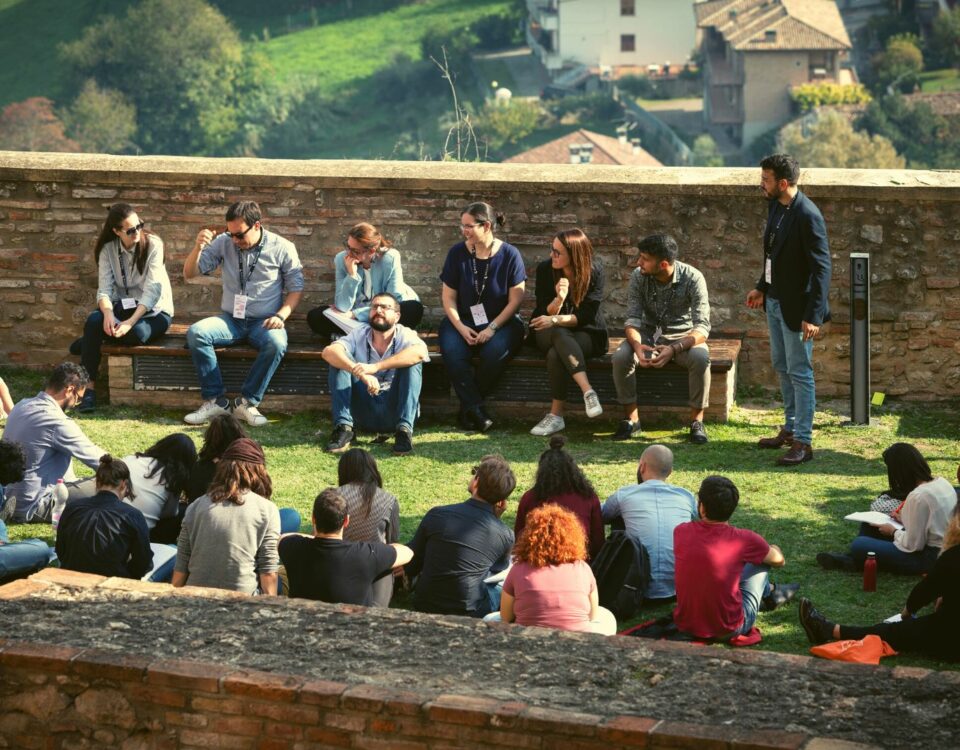
Call for Abstracts – 6th CIRIEC International Research Conference on Social Economy
2 February 2017
Social Innovation Community Summer School
19 April 2017Paolo Venturi (Aiccon-University of Bologna), Flaviano Zandonai (Iris Network- University of Trento)

 Is it necessary to climb up the “internal areas” of central Italy mountains in order to search for the Holy Grail of platform cooperativism? Are “community cooperatives” hiding by having vague fantasy names such as “Valle dei Cavalieri” (The Knights Valley)? Perhaps yes, waiting for a more precise delineation of an authentically collaborative economy (even in the digital spaces of on-demand economy). That is, a kind of economy able to bring to maturity models wherein its cooperative nature can be identified, at the time being, in the needs of rights protection (on the supply side) and of involvement in the management process (on the demand side).
Is it necessary to climb up the “internal areas” of central Italy mountains in order to search for the Holy Grail of platform cooperativism? Are “community cooperatives” hiding by having vague fantasy names such as “Valle dei Cavalieri” (The Knights Valley)? Perhaps yes, waiting for a more precise delineation of an authentically collaborative economy (even in the digital spaces of on-demand economy). That is, a kind of economy able to bring to maturity models wherein its cooperative nature can be identified, at the time being, in the needs of rights protection (on the supply side) and of involvement in the management process (on the demand side).
This is only the first step of a path that, by the book, starts with the advocacy on the needs to achieve, hopefully, a genuine form of cooperation, which goes beyond the “revindicative platforms” and gets to share means and aims of economic action.
Are we dealing with historical recourses, whose new element is only due to the virtual nature of cooperative space? Not exactly.
Italian community cooperatives are relevant because, thanks to their experience, they mark a significant shift even in the social economy, their institutional environment of reference.
Their authenticity becomes clear, as they represent enterprises that originated from a group of pioneers that invested in their own community in order to create collective value, i.e. profits able to generate employment and relaunch the public dimension. It is entrepreneurship that becomes State by regenerating the merit-based side of public services such as transportation, educational institutions, social services, and which becomes market thanks to the ability to identify and enhance unutilized territorial (cultural, environmental, enogastronomic etc.) resources, representing the basis to reactivate local development. Moreover, they are cohesive organizations, truly cooperative in this sense, where the input of the production value consists of the will of some people to make the community industrious and alive.
The fact that we are making reference to a few examples – dozens, according to recent investigations – is not something important because of their critical mass, which is measured by considering the unexpressed potential of a new civic activism, called to scale up the economic dimension through sui generis entrepreneurial models. In addition to this, although still in process, these experiences take on a paradigmatic character, which identifies them as a vehicle to carry out the transition towards new social and economic structures. Other hybrid subjects have the same fate, and despite the diversity of approaches, contexts and paths, they are anyway symbols of a paradigmatic transformation that does not match with anything, yet overlaps with everything: from models on consumption to welfare, from the environmental protection to cultural production, etc.
For this reason, the “School of Community Cooperation”, promoted by the Italian Cooperatives Alliance as well as the Emilia-Romagna region, is taking a whole and atypical shape, different from the one usually employed in similar initiatives, due to the territorial proximity and affinity of the organizational model. Some of the participants of this atypical school are pubic administrators, activists for the commons, representatives of cooperative federations, third sector spokespersons, agri-tourism entrepreneurs, and start-uppers searching for their “social vocation”. The social innovation community can be described as varied, multi-localized, cohesive around the ability to provide an answer to “societal challenges”, and change-oriented, especially at an organizational level and as far as networks architecture is concerned. Maybe a new generation of “equitable pioneers”, like those who established the first cooperatives in Rochdale, is emerging.
The attention towards community cooperatives is focused on a vast number of topics. Among others,it allows to closely observe resilience processes triggered by shocks breaking not only hydrogeological structures, but also the routine of economy, social networks and territorial government. These cooperatives, which can be considered only as parts of chain productions and not specific sectors, involves what Richard Sennett calls “pleasures, rituals and politics” of participation of a plurality of actors, that goes beyond the traditional mutuality founded upon homogeneity of needs/interests and ideological/cultural grounds. Nevertheless, the most remarkable element is the strong fertilization factor that brings together a new generation of cooperativism, which is represented by a whole set of resources constituting the assets of those initiatives. In community cooperatives, economic turnover is not that relevant and the governance dimension is not collective, but rather based on an active minority. The real community asset of these experiences is the capital. As community resources can be both tangible and intangible, its regulations transform the entities in the enablers of economies and sociality, which are placed both inside and outside their organizational and societal boundaries. Not only these hubs implement actions within general objectives but they also initiate their natural belongings (family, territory, intermediate organisms), as they did in the past. They also act on self-interest when it is undermined by initiatives causing displacement, such as environmental damage, cafés closing down, the reduction of public transport etc.
The development of a community asset does not follow a linear path and occasionally intercepts certain polarities. The first element is the search of a place in which relations can be established. One primary objective is to trivialize the mere need of space, as well as to foster the flux of exchanges (not only marked-based and formal ones), through which new opportunities (e.g. professional ones) and sense of sharing (doing things differently) can be generated. The second mechanism concerns the formation of economies, which can be defined as “local”. In most cases, what really matters are not core-business, but rather externalities, e.g. economies originated from different initiatives, even in an unexpected way. It is true that these externalities cannot be planned, however they can be constituted, by recalling John Rawls, “under a veil of ignorance”. Put in another way, they exist and are relevant for the sustainability of initiatives, therefore management models are needed to enable and enhance them. Finally, the third polarity consists of building and managing a system of norms that regulates the use of the community infrastructures, by trying not to impair its availability and to limit the overexploitation of its resources.
This informal nature is typical of cooperation, economies based on spillover, and inclusive governance molded on beneficiaries. In fact, community cooperatives, as seen by the viewpoint of their capital, are very similar to the commons. It does not matter whether we are dealing with a polyfunctional structure, such as hosting a café or a restaurant, a grocery store selling either food or commercial goods, through which they spread the vocations of a territory by proposing a new touristic offer. In the end, they are autopoietic organizations, i.e. they constantly try to redefine themselves on the grounds of their “constitutional” funds, as well as by identifying a stable core of norms that regulate the access to contents and resources of a common use and management. A message that, perhaps, may enhance the path towards a totally accomplished social cooperativism.




